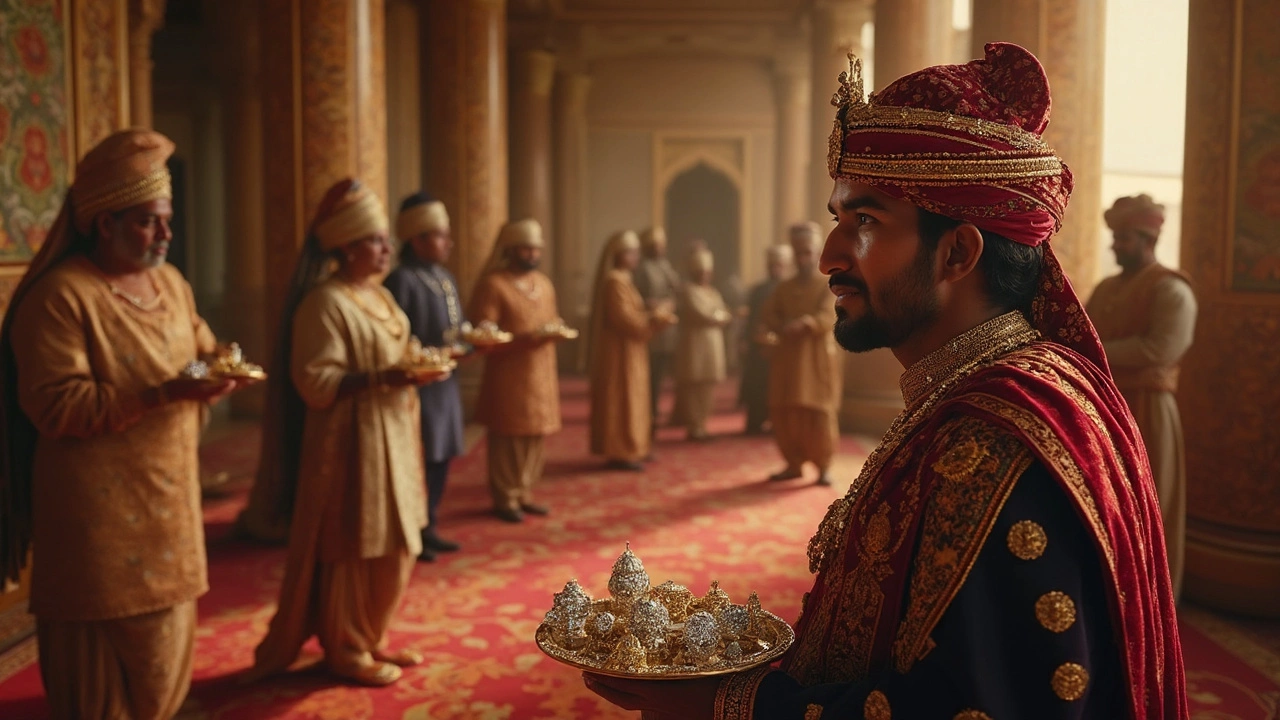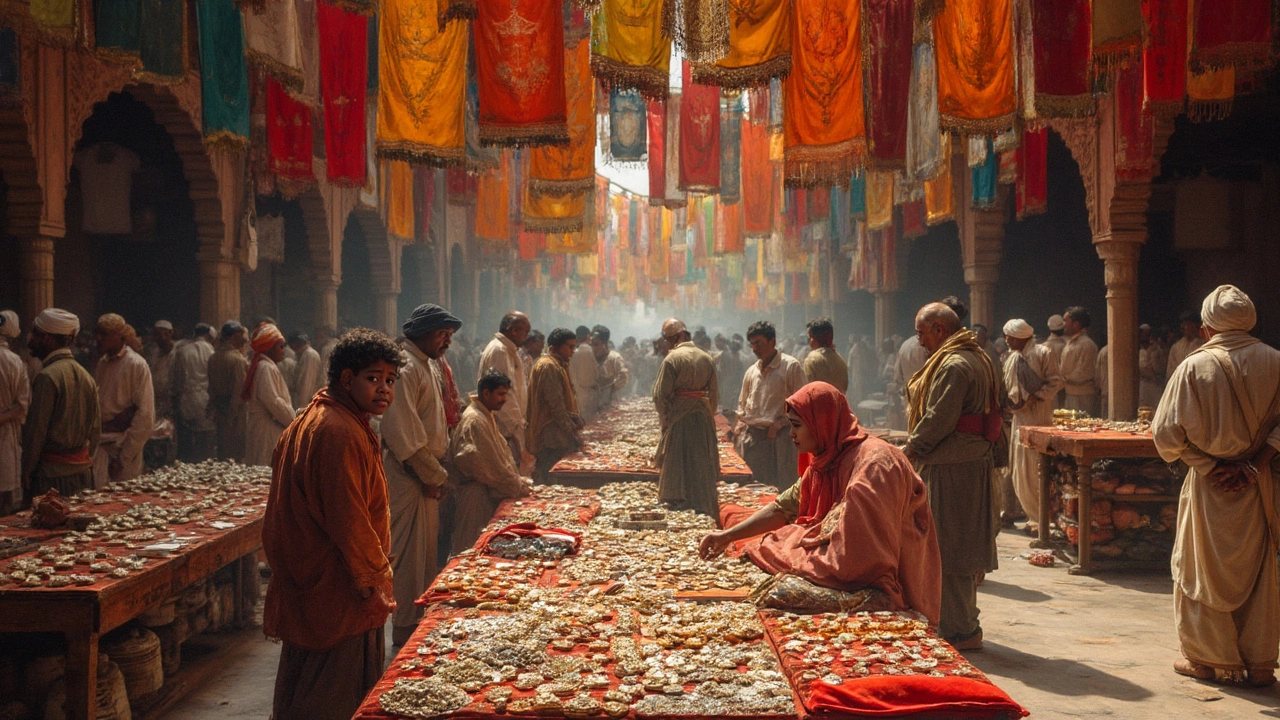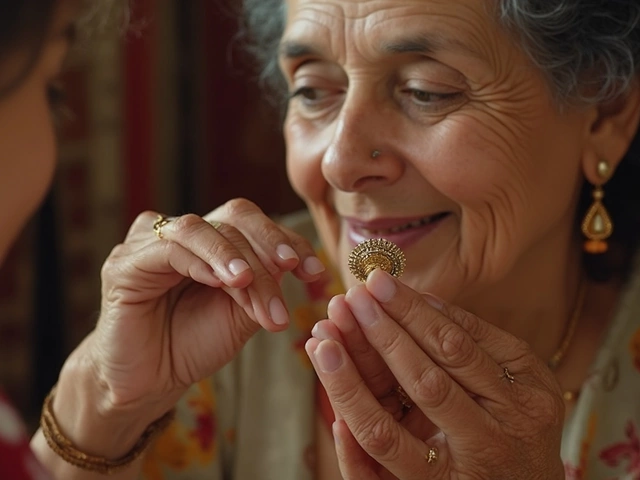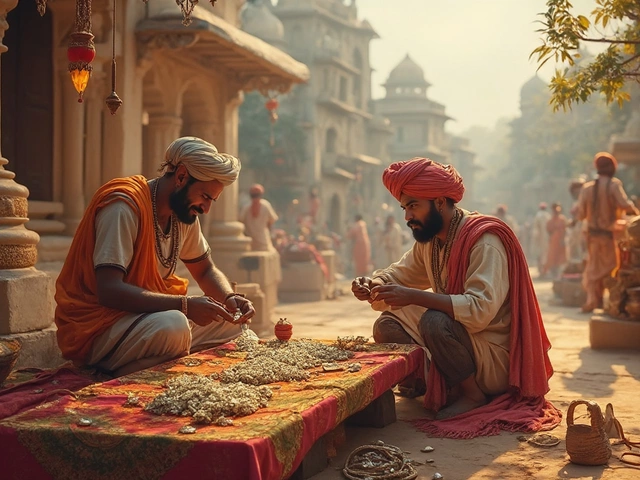
When you think about diamonds, India might not be the first place that pops into your mind. But, believe it or not, for a good chunk of history, this country was the go-to spot for diamonds. Before the diamonds of Africa or Russia came into the picture, India was basically the global diamond HQ. The rivers and streams were packed with those shiny gems that everyone went crazy for.
One of the most legendary diamonds to come from India is the Koh-i-Noor. This thing's got a backstory more intriguing than any TV drama. From kings to queens, it has passed through many royal hands across centuries. Want a conversation starter? This diamond’s story will have everyone’s ears perked.
- The Legacy of Indian Diamonds
- Famous Indian Gems
- The Timeless Koh-i-Noor
- Indian Diamonds in Today's Market
- Tips for Buying Indian Diamonds
The Legacy of Indian Diamonds
India’s relationship with diamonds goes way back, like all the way to the 4th century BC. The country’s diamond history starts along the banks of the Krishna and Godavari rivers. Imagine ancient times, barefoot traders crossing through vast lands to barter these sparkling stones at bustling markets. That was a regular day in India back then.
For centuries, India wasn't just the main source of diamonds; it was the Indian diamonds that became synonymous with beauty and power. Folks around the world craved these gems, not just for their sparkle but for what they symbolized — unmatched wealth and prestige. Royals and nobles wore them as symbols of their kingship and divine favor. The knowledge of cutting and polishing diamonds even took root here before spreading to different parts of the globe.
The Golconda region is one of the most famous diamond mining sites in India, giving birth to several legendary stones. It even gave the world the hope diamond, which is said to bring both good fortune and mysterious misfortunes. So, it’s a bit of a gamble!
Though large-scale mining has shifted to other global hotspots today, India still remains a key player in the diamond industry. It’s mostly thanks to Surat, a city that now processes nearly 90% of the world’s rough diamonds. If you’re wearing a diamond, chances are it took a little detour through India.
Famous Indian Gems
India's reputation for housing some of the world's most stunning diamonds isn't just talk—it's backed by a solid history of remarkable gems. We're not just chatting about pretty rocks; these are diamonds with street cred that goes way, way back.
First off, there's the Koh-i-Noor. This diamond is practically royalty in itself, with a history that tracks back to ancient times in India. It's famously part of the British Crown Jewels now, which makes sense given its lengthy and intricate tale of conquest and power. Some people even believe it brings down any man who owns it—so, maybe it’s best it stays with the Queen!
Another glimmering star is the Hope Diamond. It's got a vibe that's hard not to notice. Originating from India, this iconic blue diamond journeyed through Europe and even made its way to the US. Today, it's a showstopper at the Smithsonian, attracting tons of diamond fans yearly.
Then there's the Regent Diamond. Discovered in India's Golconda kingdom, it was once part of the French Crown Jewels. And get this, it's said to have been part of Napoleon's bling, embedded in his sword's hilt. Talk about a diamond with an epic ride!
If those stories don't already captivate your inner treasure hunter, here's an interesting nugget: for centuries, India was the world's only source of diamonds. Imagine that! The distinctive Golconda mines pumped out many of the legendary stones we still swoon over today.
These Indian gems aren't just about the sparkle. They're pieces of history with a hefty side of drama and intrigue. Next time you catch a glimpse of one, remember the tales and the lands they've crossed. Truly, they're more than just stones; they're storytellers of a bygone era.

The Timeless Koh-i-Noor
Alright, let’s dig into the most famous diamond with a story richer than a chocolate cake— the Koh-i-Noor. This legendary gem, weighing a hefty 105.6 carats today, has its roots planted deep in the Indian soil. What's wild is this diamond has been around since forever, with some claims dating it back over 5,000 years!
Originally found in India, it has been a part of the history books, gossip circles, and even international drama. You see, the Koh-i-Noor wasn’t just any stone; it was considered a symbol of power and dominion. Whoever held this diamond was seen as having the upper hand, and trust me, that led to some royal tussles.
This diamond has sparkled on many a crown. It’s made its rounds through different dynasties in India, before landing with the British after the annexation of Punjab in the 1840s. Today, it's snugly fixed in the British Crown Jewels, and yep, there’s a bit of a tug-of-war over where it truly belongs.
What’s interesting is how the Koh-i-Noor is surrounded by myths. There’s a belief that men who wear it could face calamity, but it supposedly brings fortune when adorned by a woman. Sounds like a tale out of a fairy-tale book, right?
Despite the drama and disputes, the Koh-i-Noor remains a fascinating piece, with folks across the world still in awe of its history and brilliance. It’s not just a diamond; it’s a symbol of the rich history of Indian diamonds and their unmatched appeal across generations.
Indian Diamonds in Today's Market
Nowadays, the diamond scene has changed a lot thanks to the entrance of global players. However, Indian diamonds are still holding their ground, especially when it comes to craftsmanship. While the country might not be as dominant in mining as it was in the past, India remains a key player in diamond cutting and trading. In fact, cities like Surat are like the backstage heroes for the diamond industry, where a massive chunk of the world's diamonds get cut and polished. You could say diamonds come here for a makeover.
Why is India still such a big deal in the diamond world? It's all about those intricate cutting skills. Indian craftsmen are famous for turning rough gems into things of beauty. If you’re hunting for high-quality, beautifully crafted diamonds, you'd want to look for those Indian origins.
Now, let's talk numbers. It's estimated that India processes around 90% of the world's rough diamonds. Pretty wild, right? And with the rise of online markets, you can easily order your precious gem from India without even leaving your couch.
| Aspect | Detail |
|---|---|
| Global Processing | 90% of rough diamonds |
| Main Cutting Hub | Surat, India |
For those looking to buy diamonds with an Indian touch, there are a few things to keep in mind. The 4 Cs—cut, color, clarity, and carat—are super important, no matter where in the world you buy from. However, if you’re specifically looking for Indian diamonds, try to verify the source and see if the seller has connections with reliable Indian suppliers. This ensures authenticity and quality.
So, if you're in the market for diamonds that have been handled with extra care, produced sustainably, and come with a rich history of craftsmanship, you might just find that Indian diamonds are the way to go.

Tips for Buying Indian Diamonds
So, you’re on the hunt for that perfect diamond, and you’ve got your heart set on one from India. Smart move! Indian diamonds have this classic allure, and they’ve been admired for centuries. But before you dive into the world of sparkle and glam, there are a few things you might want to consider. Let’s break it down.
First off, do your homework. Knowing the history of Indian diamonds can add a richer story to your purchase. Understand the origins, the mines, and how these gems made their way into jewelry history. Trustworthy dealers will happily share this info—it’s like getting a backstage pass!
Next, always check the certification. You want to make sure that your diamond comes with a reliable grading certificate. Organizations like GIA are top-notch in this field, providing details on the stone’s cut, clarity, carat, and color. Remember, a certificate is more than just a paper—it’s your diamond’s passport.
- Carat: Bigger isn’t always better. It’s about how the carat weight fits your preference and budget.
- Clarity: Check for inclusions or blemishes. Tiny imperfections can make a diamond unique but know what you're buying.
- Cut: This affects how light reflects through the diamond. A well-cut diamond sparkles more.
- Color: While most Indian diamonds are known for their purity, some may have unique tints that are equally mesmerizing.
Got a budget? Great, stick to it. Indian diamonds come in a variety of styles and prices, so finding something stunning that doesn’t break the bank is totally possible. Plus, investing in white diamonds isn’t your only option. India has a rich array of colored diamonds, too.
Before sealing the deal, make sure you know the returns policy. This might seem mundane, but believe me, it’s important. Life happens, and having the option to reconsider your purchase can be a lifesaver.
Finally, don’t shy away from asking questions. Buy from sellers who are transparent about their sourcing and craftsmanship. This transparency is part of the charm when buying a diamond from India; it’s not just about the bling, it’s about the journey your diamond has taken.


